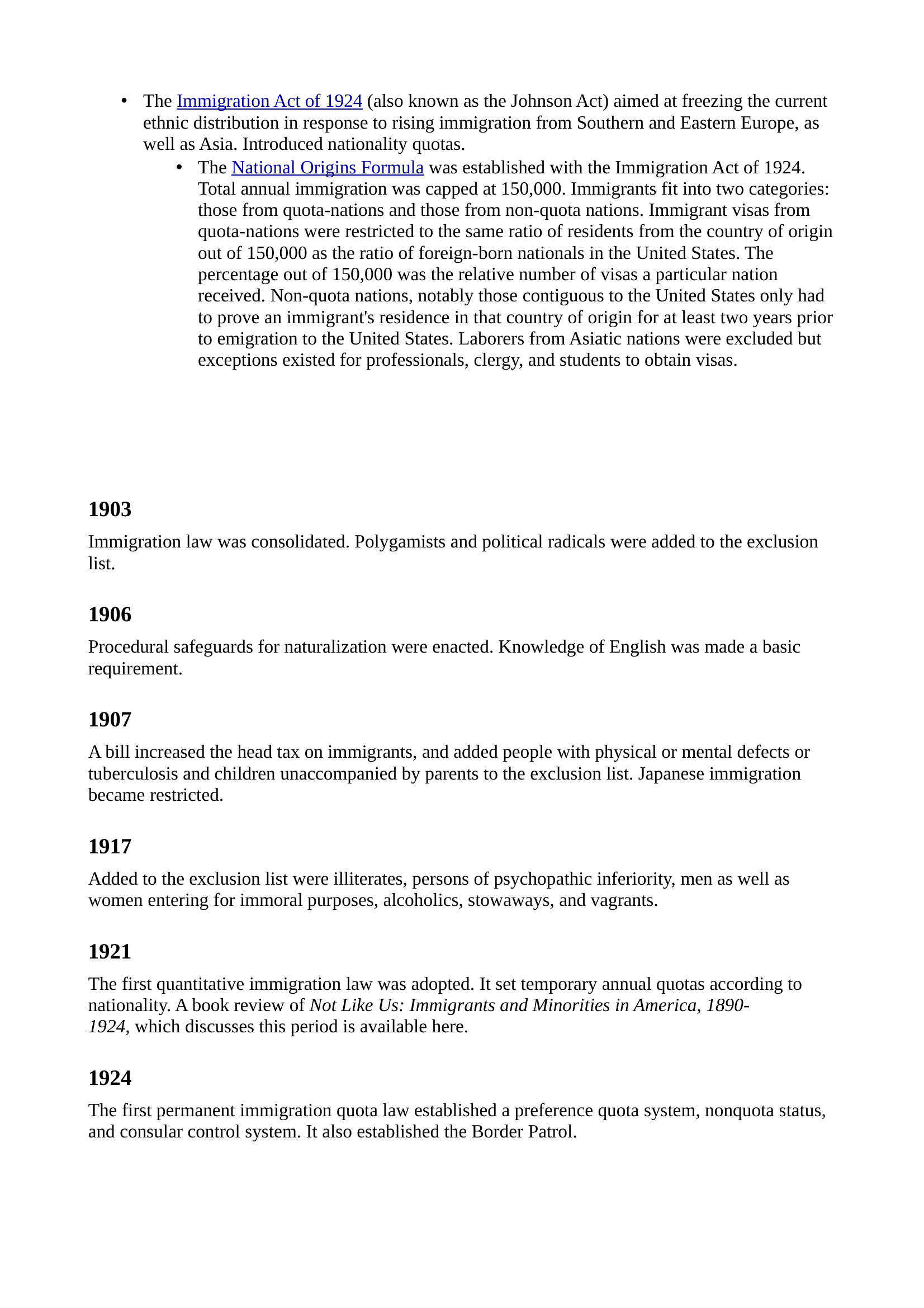Immigration laws
Publié le 02/05/2015

Extrait du document


«
• The Immigration Act of 1924 (also known as the Johnson Act) aimed at freezing the current
ethnic distribution in response to rising immigration from Southern and Eastern Europe, as
well as Asia.
Introduced nationality quotas.
• The National Origins Formula was established with the Immigration Act of 1924.
Total annual immigration was capped at 150,000.
Immigrants fit into two categories:
those from quota-nations and those from non-quota nations.
Immigrant visas from
quota-nations were restricted to the same ratio of residents from the country of origin
out of 150,000 as the ratio of foreign-born nationals in the United States.
The
percentage out of 150,000 was the relative number of visas a particular nation
received.
Non-quota nations, notably those contiguous to the United States only had
to prove an immigrant's residence in that country of origin for at least two years prior
to emigration to the United States.
Laborers from Asiatic nations were excluded but
exceptions existed for professionals, clergy, and students to obtain visas.
1903
Immigration law was consolidated.
Polygamists and political radicals were added to the exclusion
list.
1906
Procedural safeguards for naturalization were enacted.
Knowledge of English was made a basic
requirement.
1907
A bill increased the head tax on immigrants, and added people with physical or mental defects or
tuberculosis and children unaccompanied by parents to the exclusion list.
Japanese immigration
became restricted.
1917
Added to the exclusion list were illiterates, persons of psychopathic inferiority, men as well as
women entering for immoral purposes, alcoholics, stowaways, and vagrants.
1921
The first quantitative immigration law was adopted.
It set temporary annual quotas according to
nationality.
A book review of Not Like Us: Immigrants and Minorities in America, 1890-
1924, which discusses this period is available here.
1924
The first permanent immigration quota law established a preference quota system, nonquota status,
and consular control system.
It also established the Border Patrol..
»
↓↓↓ APERÇU DU DOCUMENT ↓↓↓
Liens utiles
- Immigration in Deutschland
- TPE " l'immigration et les médias "
- l immigration
- L'immigration en italie
- Article immigration

































